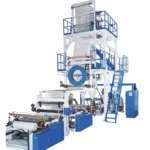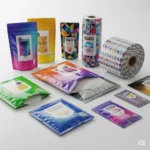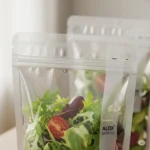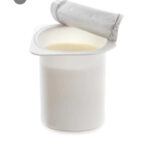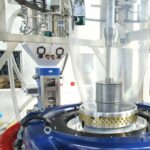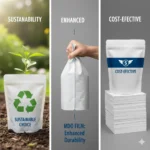Discover effective costing tips for blown film extrusion. Learn how to optimize raw materials, energy, and maintenance for higher profits in Blown film. Discover key factors like raw materials, production efficiency, energy usage, and waste control that impact overall costs. A complete guide for manufacturers and packaging professionals.
Introduction
Running a blown film extrusion plant can be highly profitable, but it’s also capital-intensive. Between raw material expenses, electricity bills, labor, and machine maintenance, costs can pile up quickly. The good news is that with the right strategies, you can optimize production costs while maintaining consistent film quality.
In this article, we’ll explore practical and proven costing tips for blown film extrusion. Whether you’re managing a small-scale plant or a large packaging facility, these insights will help you control expenses, improve efficiency, and boost profitability.
Why Cost Control Matters in Blown Film Extrusion
The flexible packaging industry is extremely competitive. Customers expect high-quality films at the lowest possible price. If your cost per kilogram is higher than your competitors, winning orders becomes tough.
That’s why smart factories focus not just on output but also on cost efficiency. Small improvements—like reducing power consumption or minimizing raw material waste—can make a big difference in overall margins.
Key Cost Drivers in Blown Film Extrusion

Before jumping into tips, it’s important to understand where most of the expenses come from. Typically, the major cost contributors include:
- Raw materials (60–70% of total cost)
- Power and utilities (15–20%)
- Labor and manpower
- Machine maintenance and spare parts
- Waste and rejections
Once you identify these cost centers, it becomes easier to manage and optimize them.
Costing Tips for Blown Film Extrusion
1. Optimize Raw Material Usage
Raw materials account for the majority of costs in blown film extrusion. Even a small saving here can impact profits significantly.
- Buy in bulk: Purchasing resin in larger volumes often brings discounts.
- Mix grades smartly: Combine HDPE, LDPE, and LLDPE based on application to balance strength and cost.
- Use recycled content: Where product specs allow, include reprocessed or post-consumer resin.
- Work with reliable suppliers: Consistency in resin quality avoids rejections and rework, saving money in the long run.
2. Reduce Energy Consumption
Extrusion machines consume a lot of electricity, especially for heating and cooling. Lowering energy usage directly reduces production costs.
- Maintain heaters and barrels: Clean heating zones regularly to avoid excess power draw.
- Insulate heating bands: Prevent heat loss with proper insulation.
- Optimize cooling: Adjust air ring settings and blower speeds to avoid overuse of compressors.
- Invest in energy-efficient drives and motors: Modern machines can reduce electricity usage by up to 20%.
3. Minimize Waste and Scrap
Every kilogram of film wasted increases cost. Reducing scrap is one of the fastest ways to improve margins.
- Monitor bubble stability: Fluctuating bubbles often lead to thickness variation and roll rejection.
- Train operators: Skilled staff can quickly adjust process settings to avoid defects.
- Use automatic gauge control systems: Technology helps maintain consistent film thickness.
- Reprocess scrap wisely: If film waste is clean, recycle it back into the extrusion process.
4. Focus on Preventive Maintenance
Unplanned breakdowns not only halt production but also increase maintenance costs. Preventive maintenance keeps machines running smoothly.
- Schedule regular checks: Inspect screws, barrels, and die heads for wear and tear.
- Lubricate moving parts: Reduce friction and extend equipment life.
- Replace worn-out parts on time: Avoid costly breakdowns and downtime.
- Keep spares ready: Stock critical parts like heaters, thermocouples, and pressure gauges.
5. Improve Production Planning
Inefficient production scheduling leads to frequent changeovers, higher scrap, and wasted time. Better planning reduces hidden costs.
- Plan longer runs: Run bigger production batches to minimize changeovers.
- Group similar jobs: Schedule jobs with the same resin type or color together.
- Forecast demand: Use past sales data to plan raw material orders and reduce emergency purchases.
6. Invest in Skilled Labor and Training
While labor may not be the biggest cost factor, unskilled operators often create hidden losses through mistakes, downtime, or poor quality.
- Train regularly: Teach operators about bubble stability, thickness control, and troubleshooting.
- Reward efficiency: Incentive-based programs encourage workers to reduce waste.
- Cross-train employees: Skilled staff who can handle multiple machines reduce dependency on specific individuals.
7. Monitor Film Thickness Closely
Film thickness variations lead to both wasted resin and customer complaints.
- Calibrate micrometers regularly: Accurate tools ensure proper measurement.
- Check rolls frequently: Inspect at different points to spot variation early.
- Automate thickness control: Advanced systems can maintain uniform gauge without manual adjustments.
8. Upgrade Technology When Possible
Old machines may still run, but they usually consume more power, require frequent maintenance, and generate higher waste.
- Retrofit with modern controls: Even partial upgrades can save energy and reduce scrap.
- Consider multilayer machines: These allow cost savings by combining cheaper resins in inner layers while keeping premium material outside.
- Monitor ROI: Sometimes, the cost of upgrading pays back within a few years through energy and raw material savings.
9. Keep a Costing Sheet for Every Job
Tracking expenses in detail gives better visibility into profitability.
- Record resin consumption: Track how much material was planned versus used.
- Include all expenses: Add energy, labor, scrap, and overhead costs.
- Compare job-wise margins: Identify which orders are profitable and which are not.
- Use data for negotiation: Share actual cost data with suppliers and customers during price discussions.
10. Embrace Lean Manufacturing Principles
Adopting lean practices helps eliminate unnecessary steps and waste.
- 5S implementation: Keep the workplace clean, organized, and efficient.
- Standard operating procedures (SOPs): Ensure uniform machine operation.
- Continuous improvement mindset: Encourage staff to suggest cost-saving ideas.
Conclusion of Reducing blown film Costing.
Blown film extrusion is an exciting but cost-sensitive business. The key to success lies not only in producing quality films but also in managing expenses smartly. By optimizing raw materials, reducing energy consumption, minimizing waste, and investing in preventive maintenance, factories can significantly lower costs.
Remember, even small savings in one area—say a 2% reduction in resin usage—can have a huge impact on overall profitability. With continuous monitoring, training, and smart planning, you can keep your extrusion plant competitive and profitable in today’s challenging market.

